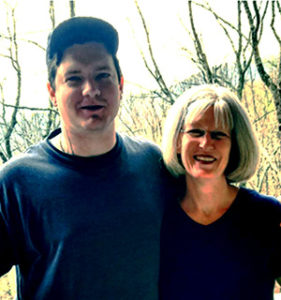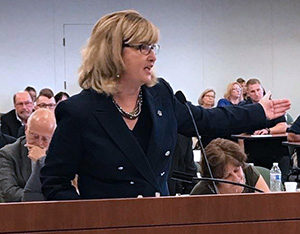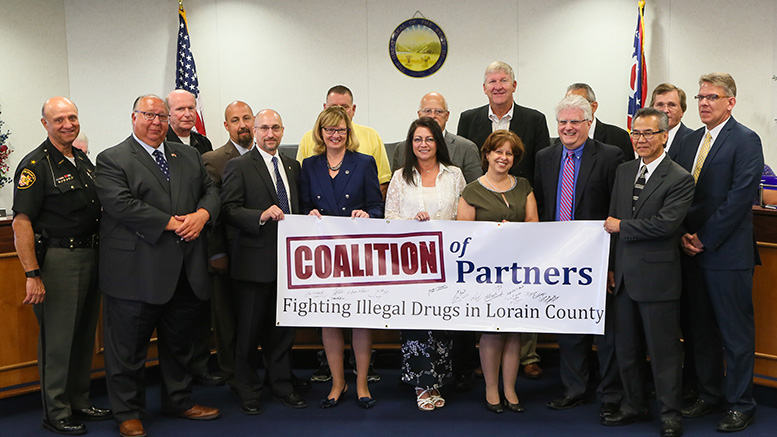Asheville-Buncombe Technical Community College (A-B Tech) in North Carolina was devastated by a fatal overdose on campus last month.
But when A-B Tech spokesperson Kerri Glover alerted the media about the death, “both television and newspapers told me it unfortunately wasn’t considered newsworthy because they see multiple death reports everyday of young people who die from opioid overdoses.”
“That really started to wake us up,” Glover says. She subsequently learned that two other students experienced overdoses on campus this summer – one passed out in an evening class and another was found in a restroom – and both were revived with the drug naloxone. Another three students died of overdoses off campus.
Heather Pack, director of student support services at A-B Tech, says nine of out 10 students coming in for personal counseling report a problem with addiction.
A-B Tech is not alone. The opioid epidemic is affecting virtually every corner of U.S. society, and community colleges are responding in a variety of ways – through education, stepped-up counseling and recovery services, and partnerships with law enforcement.
A student’s struggle
Stuart Mosely, the 30-year-old A-B Tech student who suffered a fatal heroin overdose, had walked out of a classroom on July 3 and never returned. His body was later found in a restroom on campus.
He had been using opioids off and on for the past 12 years, been through periods of homelessness, and had been in recovery several times, says his mother, Anne Seaman.
Seaman is speaking out publicly about her son’s struggles with drugs and appears in a video produced by A-B Tech that will be shown to all incoming students. She is also working with the college to start a group for people in recovery and hopes to find a dedicated space for it, noting, “the community college has been very good on being proactive and has been very responsive.”
“It’s no longer an epidemic here in Asheville. It’s an emergency. It cuts across all socioeconomic and demographic lines. It’s just everywhere,” Seaman says. “Some people bury it. I have chosen not to bury it.”
Before her son started using again, he had been clean for about nine months. He had moved back into his parents’ home, got a job in the kitchen at a religious retreat, and enrolled part-time at AB-Tech, where he was working on an associate degree in network security.

Former Asheville-Buncombe Technical Community College student Stuart Mosely and his mother, Anne Seaman. (Photo: Anne Seaman)
Seaman doesn’t know why he started using again. “All it takes is one bad decision,” she says. “Once you flip that switch in your brain, you cannot turn it off.” Another addict told Seaman, “I think about it every hour of every day. It never goes away. It’s a constant fight.”
The college is working with Red Oak Recovery, a rehab facility, to provide training for faculty on the warning signs of addiction, resources for students and the physiology of addiction.
A-B Tech also hosts a three-hour event every spring on helping students cope with addiction and recovery issues and plans to step up communication with students. “We want to let them know we’re here if they want help,” Pack says.
Emergency response
In addition, A-B Tech police officers will start carrying Narcan, one of the trade names of naxalone, but the college isn’t going to publicize that because some addicts might continue to use drugs on campus if they know they will be revived should they overdose.
Opioid abuse is a huge problem in Beaver County, Pennsylvania, too, says Shelley Moore, dean of the School of Nursing and Allied Health at the Community College of Beaver County (CCBC). “It’s an epidemic here as it is everywhere.”
CCBC hasn’t had an overdose on campus but is prepared in case that happens, says Glen Natali, vice president of finance, operations and information technology. Campus police officers carry Narcan, and students in healthcare programs are being trained to recognize overdose symptoms and help people in emergencies.
A growing number of overdose deaths – a 37 percent increase from 2015 to 2016 – in Pennsylvania is due to the use of fentanyl and other synthetic opioids mixed with heroin, says Moore. Fentanyl is 50 times more potent than heroin.
And that’s led to a growing concern about the safety of first responders, she says. Because fentanyl is so powerful, people can experience the effects of an overdose merely by touching the clothing of someone who recently used it.
Educational opportunities
In Maryland, a new state law requires colleges to educate incoming students about opioid abuse. New students taking an orientation session at Harford Community College will learn about the risks associated with drug abuse and what to do if they see someone experiencing an overdose, says spokesperson Nancy Dysard.
“We haven’t had any problems at the college,” Dysard said, but “it’s really bad in Harford County.” Opioid deaths in Maryland shot up 70 percent between 2015 and 2016.
This fall, the college plans to train staff along with students in nursing, public safety and psychology programs on the use of Narcan.
“We’re ahead of the curve on this. We didn’t wait until the law was enacted,” she says, noting that President Dianna Phillips “feels it’s part of a holistic approach to education.”
Greenfield Community College (GCC) in Massachusetts is responding to the opioid crisis by hosting group meetings for students who are in recovery or dealing with affected family members, helping former addicts enroll and succeed in college, and starting a certificate program in addiction studies.
The region has seen a 50 percent increase in fatal opioid overdoses between 2013 and 2015, reports the Task Force of Franklin County and the North Quabbin Region.
The task force awarded GCC $10,000 toward tuition and fees for seven potential students referred by the county court. The program is aimed at “recovering addicts with a strong potential for success,” says Judy Raper, director of student development.
GCC launched a 29-credit certificate program in drug addiction studies in 2016. Those who complete the program can work as an entry-level counselor in a detox or rehab facility or in family drug court, says program coordinator Amy Ford.
The first three students in the program, all of them over age 45, graduated in May and plan to pursue bachelor’s degrees. Two of them already passed the state licensing exam.
“It’s not only about job opportunities,” Ford says. “It’s about educating students who will become lifelong ambassadors to engage the community in understanding the illness of addiction and removing the stigma.”
A pandemic
Although Lorain County Community College (LCCC) in Ohio has not had an overdose on campus, the college is playing a significant role in battling opioids, says President Marcia Ballinger.
“It’s no longer an epidemic in our community; it’s become a pandemic,” Ballinger says.
There were 132 overdose deaths in 2016 in Lorain County. Now, there are two or three fatal overdoses in the county every week and one overdose death every five hours in Ohio, she says.

Lorain County Community College President Marcia Ballinger speaks at a Lorain County Commission briefing about the college’s efforts to support education and training to combat the opioid epidemic. (Photo: LCCC)
Ballinger blames the spike in fatalities on the growing use of “multiple mixed drugs” – lethal combinations of synthetic opioids like fentanyl along with cocaine and heroin. Crime lab statistics show a 30 percent increase in the number of cases involving mixed drugs between the first half of 2016 and the first half of 2017.
Because of its location between Chicago, New York and the Great Lakes, the U.S. Drug Enforcement Administration (DEA) has designated Lorain County “a high-intensity drug-trafficking area,” she says. That makes the community eligible for additional federal resources.
Under a “one-roof strategy,” LCC has offered a vacant building in the college’s technology park to a coalition of local law enforcement agencies and the DEA’s advanced forensic technology unit to battle drug trafficking.
The county commission has agreed to fund scholarships for students in criminal justice and addiction counseling, and those students will have opportunities for internships with the anti-drug coalition.
LCC created the CARE (Caring Advocates for Recovery Education) Center on campus two years ago to provide counseling and other services for students, family members and the community at the request of three students who were in recovery themselves and were in an academic program on addiction counseling.
The students appeared on a panel, where “they were talking about how critically important it is to have more intensive support services,” Ballinger says. LCC partnered with other community organizations to determine the appropriate services to offer.
During the CARE Center’s first year in 2015-16, 73 students came in for services. Last year, the center served 307 students, Ballinger says.
Whether that’s because students are more aware or feel more comfortable seeking help, that’s a significant increase, Ballinger says. “We’re a microcosm of the community at large.”

